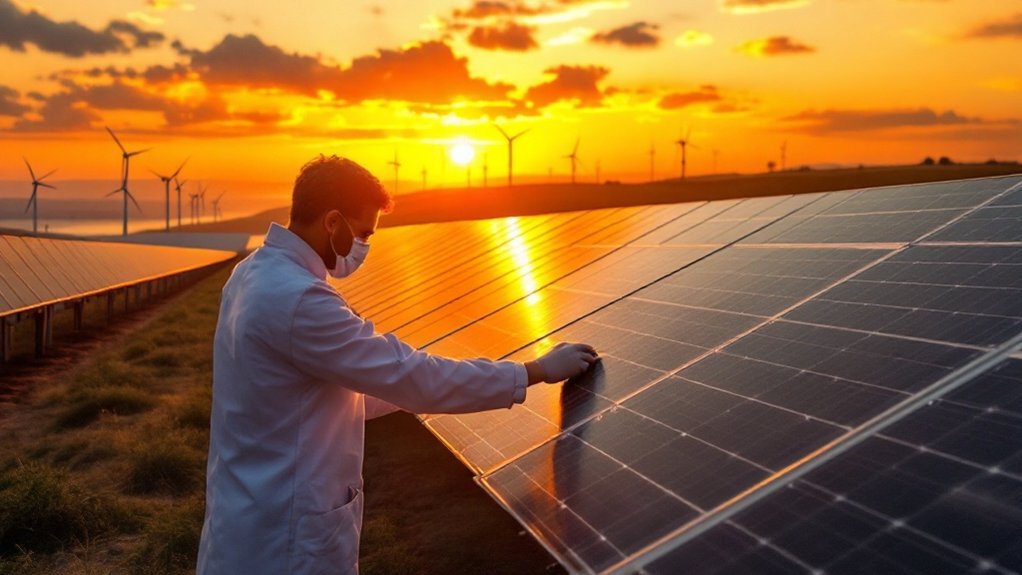
What’s New in Solar Panel Efficiency?
Recent developments in solar panel efficiency highlight significant advancements in materials and technology. Innovations like perovskite solar cells and tandem designs are pushing efficiency beyond 30%. Bifacial panels are emerging as a preferred choice due to their ability to capture sunlight from both sides, enhancing energy yields. As these trends unfold, the implications for solar energy’s future become increasingly compelling, prompting further exploration into their potential impact on sustainability and cost-effectiveness.
Understanding Solar Panel Efficiency
Although solar panel efficiency can vary considerably among different technologies, it fundamentally refers to the ability of a solar panel to convert sunlight into usable electricity. Efficiency is typically expressed as a percentage, indicating the ratio of electrical output to the solar energy input. Factors influencing this efficiency include the materials used, the design of the panels, and environmental conditions such as temperature and shading. Higher efficiency panels can generate more electricity from the same amount of sunlight, making them particularly advantageous in space-constrained installations. Understanding these factors is essential for consumers and installers alike, as they can impact overall energy production and system costs. As technology advances, efficiency improvements continue to play an important role in the solar energy landscape, and innovations in renewable energy sources are expected to further enhance performance.
The Role of Monocrystalline vs. Polycrystalline Panels
When comparing solar panel technologies, the distinction between monocrystalline and polycrystalline panels plays an essential role in determining efficiency and suitability for specific applications. Monocrystalline panels are known for their higher efficiency rates, typically exceeding 20%, due to their uniform structure, which allows for better electron flow. This makes them ideal for space-constrained installations. In contrast, polycrystalline panels are generally less efficient, ranging between 15% and 18%, but are more cost-effective to produce. Their multi-crystalline structure can lead to some energy loss, especially in low-light conditions. Ultimately, the choice between these technologies depends on factors such as budget, available space, and energy needs, guiding consumers toward the best option for their specific circumstances. Additionally, choosing solar energy contributes to sustainable practices that reduce the overall carbon footprint.
Innovations in Solar Cell Technology
Recent advancements in solar cell technology have markedly enhanced the efficiency and performance of solar panels, building on the foundational differences between monocrystalline and polycrystalline types. Researchers have explored new materials, such as perovskite solar cells, which promise higher efficiency rates at lower production costs. Additionally, tandem solar cells, combining traditional silicon with newer materials, have shown potential for exceeding 30% efficiency. Innovations in manufacturing techniques, including improved surface texturing and better light management, further contribute to efficiency gains. Furthermore, integrating nanotechnology has enabled the development of cells that capture a broader spectrum of sunlight. These advancements collectively signify a pivotal shift in solar technology, aiming for greater sustainability and energy output in the renewable energy landscape. Moreover, the integration of AI technology in renewable energy systems is enhancing the optimization of solar energy production and management.
Bifacial Solar Panels: A Game Changer
Bifacial solar panels represent a significant advancement in solar energy technology, offering enhanced efficiency by harnessing sunlight from both sides of the panel. This innovative design allows for the capture of reflected sunlight from surrounding surfaces, such as the ground or rooftops, resulting in increased energy production. The dual-sided nature of bifacial panels enables them to achieve higher energy yields compared to traditional monofacial panels. Additionally, they often feature durable materials that enhance longevity and reduce maintenance costs. As the technology matures, bifacial solar panels are becoming increasingly popular in both residential and commercial installations. Their ability to improve overall system performance positions them as a game changer in the pursuit of more efficient and sustainable solar energy solutions. Furthermore, adopting a minimalist lifestyle can complement the transition to solar energy by prioritizing investments in sustainable technologies that promote environmental responsibility.
The Impact of Temperature on Efficiency
Solar panel efficiency is influenced not only by design innovations like bifacial technology but also by environmental factors, particularly temperature. As temperature rises, the performance of solar panels typically decreases. Higher heat levels increase the resistance within the photovoltaic cells, leading to lower energy output. This phenomenon is especially pronounced in traditional silicon-based panels, which can experience a drop in efficiency of about 0.5% for every degree Celsius increase in temperature. Conversely, cooler temperatures can enhance performance, allowing panels to operate closer to their ideal efficiency. Manufacturers are aware of these effects and work to develop panels that can better withstand high temperatures, aiming to minimize efficiency losses under varying climatic conditions. Understanding this relationship is vital for maximizing solar energy systems, as mindfulness in maintaining these systems can lead to longer-lasting performance and greater energy yield.
Enhanced Materials for Improved Performance
Innovative materials are playing an essential role in enhancing the performance of solar panels. Recent developments include the use of perovskite materials, which offer considerable efficiency improvements while potentially reducing manufacturing costs. These materials exhibit excellent light absorption capabilities and can be combined with traditional silicon-based cells to create tandem solar cells, further boosting overall efficiency. Additionally, advancements in anti-reflective coatings and durable polymers enhance energy capture and longevity. Researchers are also exploring nanomaterials that can optimize charge transport and minimize energy loss. As these enhanced materials are integrated into solar technology, they promise to greatly improve the overall output and reliability of solar panels, contributing to a more sustainable energy future.
Solar Tracking Systems: Maximizing Sunlight Capture
Solar tracking systems are designed to optimize the angle of solar panels, ensuring maximum exposure to sunlight throughout the day. These systems come in various types, each offering distinct advantages that contribute to increased energy capture and efficiency. As they adjust to the sun’s position, significant improvements in overall solar panel performance can be observed.
Types of Solar Trackers
Tracking systems play an essential role in enhancing the efficiency of solar panels by optimizing their exposure to sunlight throughout the day. There are primarily two types of solar trackers: single-axis and dual-axis. Single-axis trackers rotate on one axis, typically oriented north to south, following the sun’s path from east to west. This type is widely used in large-scale solar farms for its relative simplicity and cost-effectiveness. In contrast, dual-axis trackers can move along both vertical and horizontal axes, allowing them to follow the sun’s elevation changes throughout the seasons. Although dual-axis trackers are more complex and expensive, they can considerably increase energy capture. Both types contribute to maximizing solar energy utilization in various installation scenarios.
Benefits of Tracking Systems
Implementing tracking systems can greatly enhance the overall performance of solar panel installations. These systems adjust the orientation of solar panels throughout the day to follow the sun’s path, maximizing sunlight exposure. By increasing the angle of incidence, tracking systems can capture more solar energy compared to fixed installations. This leads to higher energy yields, especially in regions with significant seasonal variations in sunlight. Additionally, tracking systems can help mitigate the impact of shading from nearby structures or trees. Although they may require higher initial investment and maintenance, the long-term energy production benefits often justify these costs. Overall, tracking systems represent a strategic advancement in optimizing solar energy harnessing capabilities.
Efficiency Improvements Noted
Significant efficiency improvements have been observed with the use of tracking systems in solar energy installations. These systems adjust the orientation of solar panels throughout the day, enhancing their angle relative to the sun. By maintaining an ideal position, tracking systems can increase energy capture by up to 25-35% compared to fixed installations. This enhanced performance is particularly beneficial in regions with high solar irradiance. Additionally, advancements in tracking technology, such as dual-axis trackers, allow for even more precise adjustments, accommodating seasonal sun shifts. As a result, the implementation of tracking systems has become an essential consideration for maximizing the energy output of solar installations, contributing to the overall effectiveness and sustainability of solar energy solutions.
The Importance of Energy Storage Solutions
Energy storage solutions play an essential role in enhancing the effectiveness of solar power systems. By providing a means to store excess energy generated during peak sunlight hours, these solutions guarantee a consistent power supply even during periods of low solar activity. Various types of storage options are emerging, paving the way for a more sustainable energy future.
Benefits of Energy Storage
While renewable energy sources like solar power offer numerous advantages, the integration of energy storage solutions is essential for maximizing their potential. Energy storage enhances the reliability of solar power by allowing excess energy generated during sunny periods to be stored for use during cloudy days or nighttime. This capability helps to stabilize energy supply, ensuring that consumers have access to power when needed most. Additionally, energy storage systems can reduce reliance on the grid, lower energy costs, and provide backup power during outages. By enabling better management of energy consumption and production, energy storage solutions contribute to a more resilient and sustainable energy infrastructure, promoting the widespread adoption of renewable technologies and facilitating a shift to cleaner energy sources.
Types of Storage Solutions
The integration of energy storage solutions is essential for enhancing the effectiveness of solar power systems. Various types of storage solutions are available, each catering to different needs and applications. Lithium-ion batteries are the most common choice due to their high energy density and efficiency, making them suitable for residential and commercial use. Flow batteries offer scalability and long-duration storage, beneficial for larger installations. Lead-acid batteries, though less efficient, remain a cost-effective option for certain applications. Additionally, innovative solutions like pumped hydro storage and compressed air energy storage provide large-scale capabilities. Each type of storage solution plays a significant role in optimizing energy use, ensuring that solar energy is available even when sunlight is not.
Future of Energy Storage
As the demand for renewable energy sources continues to rise, the importance of energy storage solutions becomes increasingly evident. Efficient energy storage systems are essential for balancing supply and demand, particularly with the intermittent nature of solar and wind energy. Future advancements in battery technology, such as solid-state batteries and flow batteries, promise to enhance energy density, lifespan, and safety, making storage more viable for widespread use. Additionally, integrating artificial intelligence in energy management systems can optimize storage and distribution, further supporting grid stability. As global energy policies evolve to prioritize sustainability, the development and deployment of innovative energy storage solutions will play a critical role in achieving energy independence and reducing carbon emissions, shaping a reliable and resilient energy future.
Government Incentives and Their Influence on Adoption
How do government incentives shape the landscape of solar panel adoption? These incentives play an essential role in promoting renewable energy solutions, particularly solar panels. By offering tax credits, rebates, and grants, governments reduce the financial burden on consumers and businesses, making solar energy more accessible. Studies show that such initiatives greatly increase installation rates, as they enhance the return on investment for solar technologies. Additionally, policies like net metering encourage users to generate their own energy, further driving adoption. As awareness of climate change grows, government support not only accelerates solar panel deployment but also fosters innovation within the industry. Ultimately, these incentives are fundamental in shaping a sustainable energy future and reducing reliance on fossil fuels.
Future Trends in Solar Panel Efficiency
The future of solar panel efficiency is poised for significant advancements through the development of advanced materials and bifacial solar technology. Researchers are exploring innovative materials that could enhance energy conversion rates, while bifacial panels are gaining traction for their ability to capture sunlight from both sides. These trends promise to revolutionize solar energy production and maximize its potential in the coming years.
Advanced Materials Development
Innovative materials are set to revolutionize solar panel efficiency, with ongoing research focusing on enhancing light absorption and energy conversion rates. Researchers are exploring perovskite materials, which have shown remarkable potential due to their tunable properties and lower production costs compared to traditional silicon. Additionally, advancements in organic photovoltaics are being investigated, emphasizing flexibility and lightweight designs suitable for varied applications. Nanomaterials, including quantum dots, present opportunities for improved electron mobility and energy capture. These advanced materials aim to not only increase efficiency but also reduce the environmental impact of solar panel production. As these innovations progress, they promise to contribute considerably to the future landscape of renewable energy solutions, paving the way for more effective solar technologies.
Bifacial Solar Technology
As solar technology continues to evolve, bifacial solar panels are emerging as a promising trend in enhancing energy efficiency. Unlike traditional solar panels, bifacial panels capture sunlight from both sides, utilizing reflected light from surfaces such as the ground or nearby structures. This dual-sided energy generation can increase overall energy output by up to 30%. The growing adoption of bifacial technology is driven by advancements in materials and manufacturing processes, allowing for more efficient designs. Additionally, bifacial panels tend to have longer lifespans and lower maintenance costs due to reduced shading and improved durability. As the solar industry shifts towards maximizing efficiency, bifacial solar technology is poised to play a significant role in future energy solutions, paving the way for greener alternatives.
Frequently Asked Questions
How Long Do Solar Panels Typically Last Before Needing Replacement?
Solar panels typically last between 25 to 30 years before requiring replacement. Over time, their efficiency gradually declines, but many maintain significant energy production beyond their expected lifespan, depending on environmental factors and maintenance practices.
Can Solar Panels Work Effectively in Cloudy Weather?
Solar panels can still generate electricity in cloudy weather, although their efficiency decreases. They harness diffuse sunlight, enabling functionality even under less-than-ideal conditions, which makes them a viable energy source year-round for many users.
What Is the Average Cost of Installing Solar Panels?
The average cost of installing solar panels typically ranges from $15,000 to $25,000 for residential systems. Factors influencing pricing include location, system size, and available incentives, which can considerably lower overall expenses for homeowners.
Do Solar Panels Require a Lot of Maintenance?
Solar panels generally require minimal maintenance, primarily needing occasional cleaning to remove dust and debris. Regular inspections can guarantee peak performance, but overall, they are designed to be durable and low-maintenance under typical conditions.
How Do Solar Panels Impact Home Resale Value?
The impact of solar panels on home resale value can be significant. Many buyers appreciate energy efficiency and lower utility costs, potentially leading to higher offers, while others may consider the initial installation expense as a drawback.
Conclusion
In summary, the landscape of solar panel efficiency is rapidly evolving, driven by innovations such as perovskite cells and bifacial technology. These advancements not only enhance energy yields but also promise to lower costs and improve sustainability. As temperature management, solar tracking systems, and energy storage solutions continue to develop, the future of solar energy looks increasingly promising. Government incentives further bolster adoption, indicating a bright outlook for the solar industry and its role in global energy transformation.



